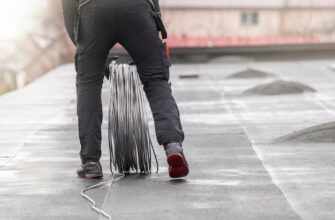
Our world is undergoing unprecedented environmental changes, highlighting the relevance of conservation efforts more than ever. One seemingly unlikely path towards preservation lies in an often overlooked side of infrastructure management – pavement protection. By the results of such a practice, we can uncover numerous ecological advantages associated with it.
Today, we delve into this subject matter focusing on a specific pavement protection method using S & S. Comprehending the workings of this particular technique not only incredible eco-friendly results but also promotes the efficient utilization of resources.
S & S, a protective pavement finishing method, stands transforming mundane maintenance chores into eco-conscious An unexpected hero, taking the mundane and transforming it into a step towards global zrenewal.
S & S’s approach to pavement protection brings forth a multitude of eco-conscious rewards, making the conservation act second to none. Equipping infrastructure with this protective layer results in lifespan, fewer repairs, and thus less resource drain, contributing overall to a healthier planet.
- Overview of eco-friendly advantages of pavement protection
- Pavement Protection is Energy Efficient
- Reduced Need for Asphalt Production
- How S&S Paving Solutions Practices Eco-Friendly Methods
- Green Practices in Pavement Protection
- Sustainability Starts from the Supplier
- Long-term impact on asphalt plus the natural world
Overview of eco-friendly advantages of pavement protection
Pavement protection, also widely known as sealcoating, has a significant part in preserving the environment. Utilizing advanced sealcoating techniques not only results in long-lasting, sturdy pavements but also contributes substantially to the well-being of our ecosystem. The section sheds light on the myriad ways that sealcoating turns out to be an eco-friendly option.
Pavement Protection is Energy Efficient
The black seal that is used as a coat on the pavements absorbs sunlight and heat instead of reflecting it, making the house cooler and reducing the need for air This reduction eventually leads to less consumption of energy and natural resources.
Reduced Need for Asphalt Production
By preserving pavements through sealcoating, the need for producing additional asphalt for repair and maintenance reduces, directly impacting the energy consumption and emissions involved in asphalt production.
| Element | Efficiency Gain |
|---|---|
| Energy Usage | Less energy is used due to the reduced need for heat or AC |
| Asphalt Production | The demand for asphalt production drops, reducing pollution and energy use |
In conclusion, sealcoating is not just about preserving and enhancing the aesthetic value of pavements, it also plays unremitting role in conserving our environment. Making an optimum use of resources, while minimizing the negative environmental impacts is the core of pavement protection, hence, we must encourage and adopt this practice at a larger scale.
How S&S Paving Solutions Practices Eco-Friendly Methods
Adopting environmentally friendly approaches in construction and maintenance is crucial in today’s world. It not only helps preserve our fragile environment but also saves money in the long run. S&S Paving Solutions, a prominent player in the field of pavement protection, is no different. This section enlightens readers about how this integrates green practices into its operations, specifically in pavement preservation.
Green Practices in Pavement Protection
Pavement protection can have a heavy environmental footprint. However, S&S Paving Solutions is committed to minimizing this impact by executing sustainable practices in their pavement protection work. They utilize premium quality, eco-friendly materials that provide excellent protection from damages often by harsh climatic conditions and vehicular traffic, yet poses minimal harm to the environment.
Sustainability Starts from the Supplier
The green initiative of S&S Paving Solutions starts right from its choice of suppliers. The company diligently picks suppliers who understand and practice environmental sustainability. This includes providing products that are recyclable, energy efficient, and contain a low amount of volatile organic compounds (VOCs).
| Practice | Description |
|---|---|
| Eco-Friendly Products | Selection of materials that are low in VOCs and are safe for the environment. |
| Recyclable Materials | Preference for materials that can be repurposed into new products, minimizing waste. |
| Energy Efficient Systems | Utilization of systems that are optimally designed to conserve energy and reduce carbon emissions. |
| Sustainable Supplier Selection | Working with vendors who share the company’s green vision and implement sustainable practices. |
In conclusion, S&S Paving Solutions takes environmental responsibility seriously. The company’s commitment to green principles is evident in its usage of top-notch, eco-friendly materials and work practices, ensuring that its pavement protection services contribute to a healthier planet.
Long-term impact on asphalt plus the natural world

Understanding the protracted outcome of such processes, such as coating roads, towards both the blacktop surfaces and the world we inhabit is crucial. This section delves into the enduring effects concerning the use of applications on asphalt, alongside the corresponding implications for our global environment.
first broach the topic regarding the long-lasting impact on asphalt.
- By applying a protective layer, the durability of the asphalt significantly improves, resisting wear and tear for an extended period.
- There is a noticeable reduction in the formation of cracks and potholes, resulting from the increased flexibility offered by these applications.
- Optimal protective coating tends to revitalize the blacktop’s appearance, making it look brand new for a more extended period.
Now onto the implications for our natural world:
- The use of certain asphalt protective layers decreases the demand for new asphalt production, which, in turn, lowers the emission of harmful greenhouse gases.
- Certain eco-friendly applications have less hazardous runoff, causing minimal harm to the surrounding ecosystem.
- By improving the durability of the asphalt, it reduces the need for frequent replacements, thus helping conserve natural resources.
In conclusion, carefully choosing the right kind of protective layer for can not only extend its lifespan but also contribute positively to the natural environment.


